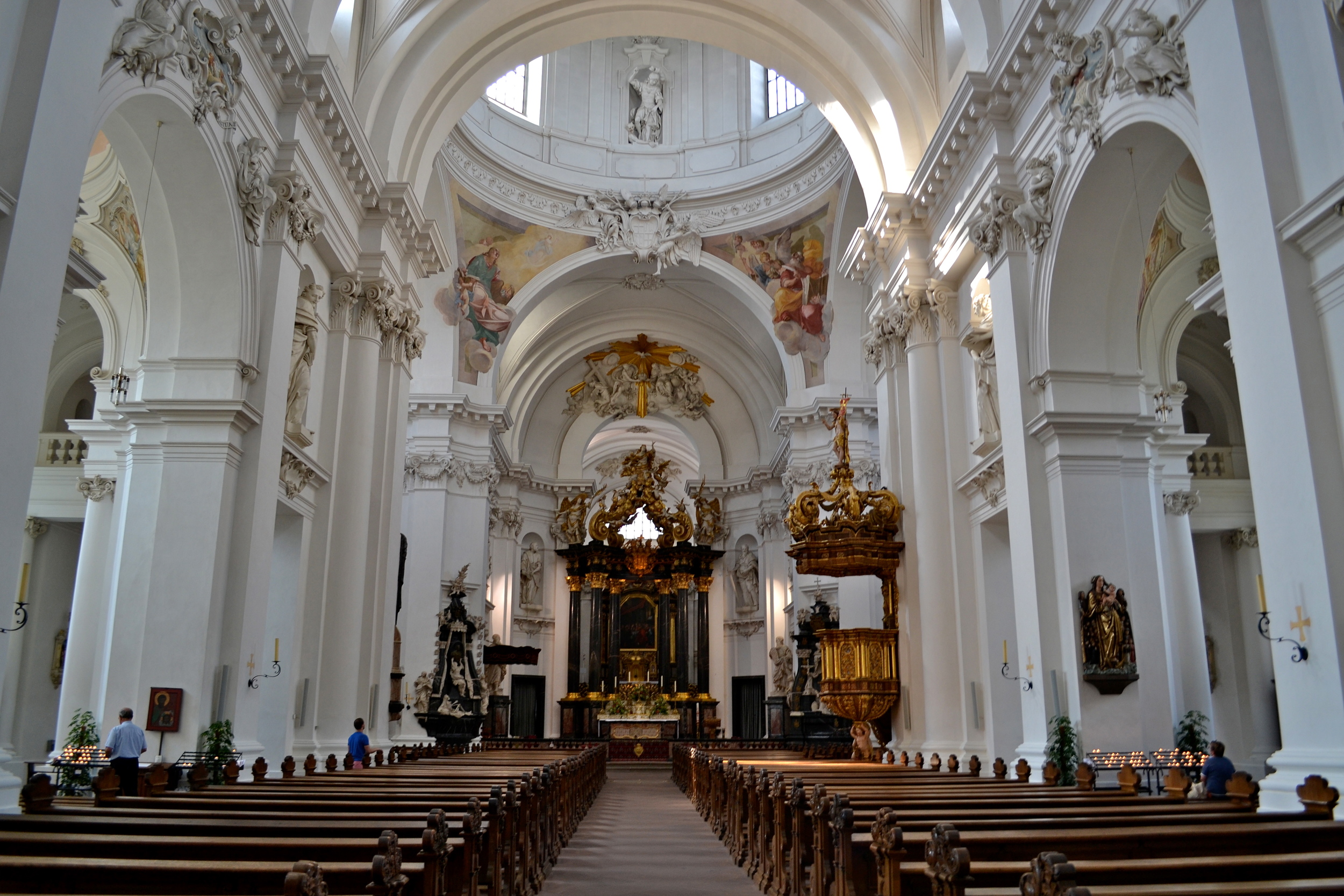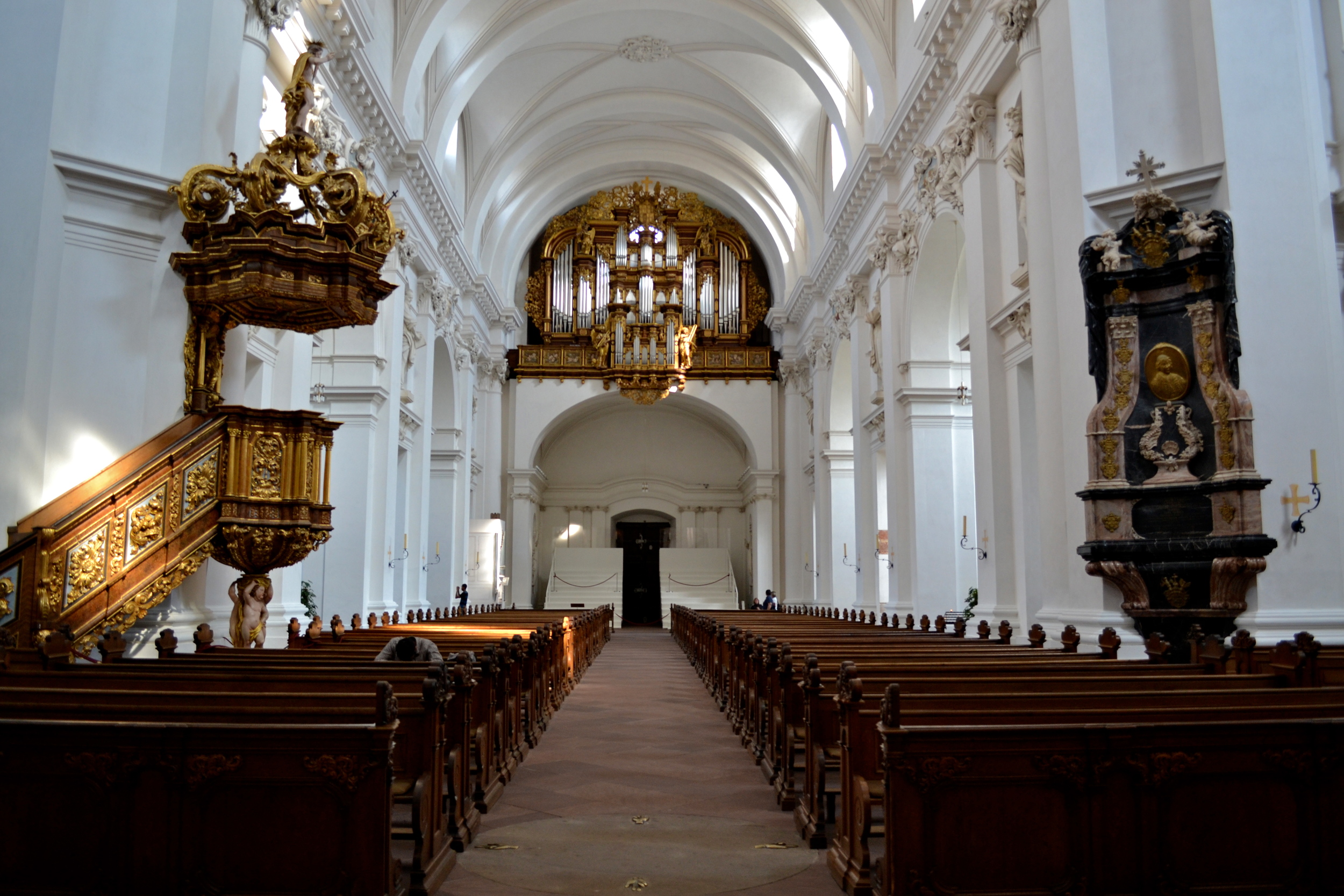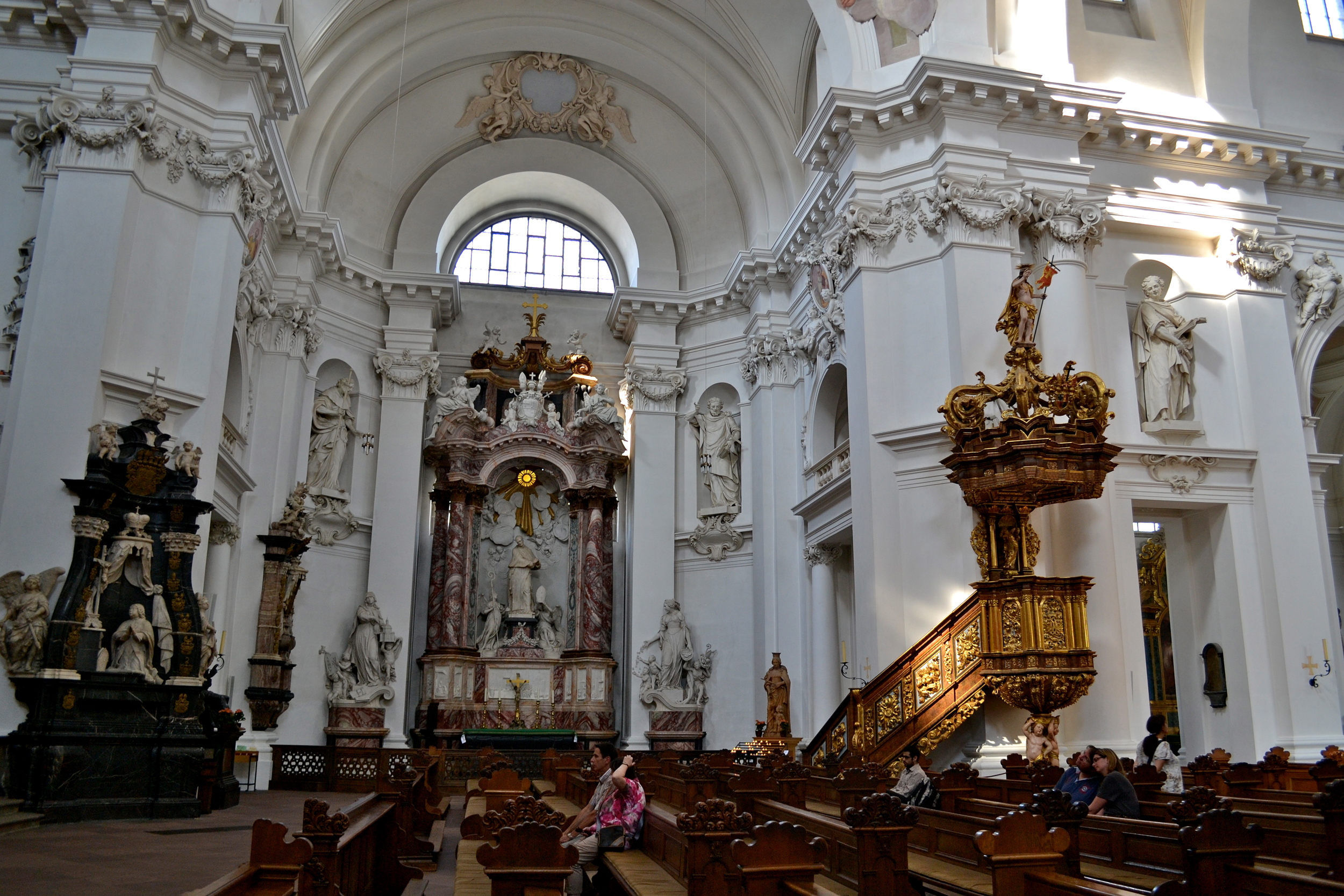A photographic tour of Fulda
As my time here in Fulda draws to a close, I realize now I didn't do a very good job of posting more pictures to give people a better idea of what the town really looks like. Anyone who's friends with me on Facebook is probably numb to my photo uploads at this point since I do them so often (I like documenting things, ok?), but I've really neglected showing my home some love on the blog.
So, with just a little more than a week left here, I'd like to share with you a virtual tour of Fulda. This is not going to cover all of the town's sights, but it does cover the main route I would take visitors through whenever they would come to see me. So, if you never had a chance to visit me in Fulda, this is totally almost the same thing! And, if you did, you can now get a much better historical understanding of the city and its sights since I now have the benefit of being able to sit and research these places, rather than trying to regurgitate my guidebook from memory (which usually resulted in me saying that a sight was built in the 1700s for someone who was probably semi-important for doing something, but who knows what).
So, let's start your journey through Braockstadt Fulda!
Our journey begins as any good European trip begins: at the train station. Bahnhof Fulda is a decently sized station for not a very large town (Fulda has a population of about 60,000). It has several platforms, and boasts excellent connections to all of Germany because of its central location -- essentially, Fulda is about 4 hours from everywhere. So, you can easily hop an ICE train direct to Berlin, Hamburg or Munich, as well as places like Dresden or Stuttgart. There's even a night train that stops here and runs all the way to Copenhagen -- not bad for a random little town an hour northeast of Frankfurt.
This is what you see as you exit the lower level of the Bahnhof. The station opens out into a pleasant square flanked with restaurants and stores. Not fancy restaurants or stores, mind you -- this is the Bahnhofsviertel (train station quarter) which is never a particularly nice area in any town or city in Germany, as far as I've found. But, as these things go, Fulda's is pleasant enough (and also not very big). Fulda is very easy to navigate, so we'll head straight from here to get into town.
Now we're walking along a cute little tree-lined street, the Bahnhofstraße. This area has recently undergone renovations, presumably to make it look nicer; though I'm not sure if it really looked all that different before.
Here we see what many females under the age of 25 would say is the single most important change in Fulda in the last five years -- the H&M. This is a relatively recent addition to the town, but a much loved one, which is evidenced by the fact that the store seems to always be crowded no matter the day or time.
Continuing along the Bahnhofstraße, we now find ourselves across from the Universitätsplatz, which is the main square in town. This is basically the gateway to the Innenstadt, the central part of Fulda. But the Ampelmann is showing red, so we need to behave like proper Germans and wait to cross the street.
And here we are! The name Universitätsplatz (or Uniplatz, as most people call it) would imply there is a university located there. This was true earlier -- one of the buildings just off the square was briefly a university, from 1744 - 1805. But today the town's only school of higher education, Hochschule Fulda, is actually located about a 20 minute walk from the Uniplatz. As previously mentioned, this is the main square in Fulda, so it's often the site of various events (on the day I took this picture, there were representatives from the police, fire department, emergency medical services and the military doing some sort of informational event). When I saw Angela Merkel speak in September, that was held at the Uniplatz, and it's also the main location for Fulda's Christmas market, though the market is big enough that it stretches through other parts of town.
This is also an example of something that could be very nice and aesthetically pleasing in Fulda being ruined (in my opnion) by a hideous building. In this case, I'm speaking of the horrendously square and bland Karstadt building in the middle of the square (in case you couldn't guess that yourself). The store itself is much nicer than the building would suggest.
Walking to the left side of the Uniplatz, we see the Vonderau Museum. It is one of many examples of Baroque architecture in Fulda, something the city is well known for (hence the nickname Barockstadt Fulda -- Baroque City Fulda). The oldest portions of the museum date back to 1584, when it was originally used as a Jesuit seminary. Additional work was done on the building through the 1700s.
I must confess I've never properly understood what the museum is. It seems to be some sort of arts and culture museum, but I don't know if it has any permanent collections or if it only houses rotating exhibitions. No one ever recommended me to go there, so I never did. I have been to its Planetarium though (which was very small, but enjoyable -- felt a lot more intimate than any Planetarium I had ever been in). The courtyard also occasionally hosts events (like Public Viewings for the World Cup), and there's a club in the basement on some nights. Basically, it's a happening place.
Now we're walking between the Museum and the Karstadt. The red sign on the left marks one of my favorite cafes in Fulda, the Museums Cafe -- if you have visited me in Fulda, there is a 100 percent chance I took you there. Solid food at solid prices -- also a great breakfast buffet! Straight ahead, you can start to see some of the cute, colorful buildings that distinguish Fulda's Aldstadt (old city).
Making a right at the end of the street, we're now walking behind the Karstadt, past some cute cafes and stores as well as a good pommes Imbiss. Fulda is never quite bustling (unless there's a major event happening), but if the weather is good there are usually a solid amount of people enoying a drink or meal outside.
As we walk straight, past the Karstadt, we come upon three statues (in front of another hideous 1950s building, but I digress). Fulda's history is very closely tied with the Catholic Church (and the city itself is still fairly Catholic today), and you will see reminders of that periodically. The statues represent three important Catholic figures in Fulda's history: St. Bonifatius, who brought Christianity to Germany (and who was extremely important to Fulda's history -- more on that later), standing on "Missio"; St. Benedikt, founder of the Benedictine order, standing on "Regula"; and St. Sturmius, a disciple of St. Bonifatius and founder of the Benedictine Monastery there in 744, standing on "Fundatio."
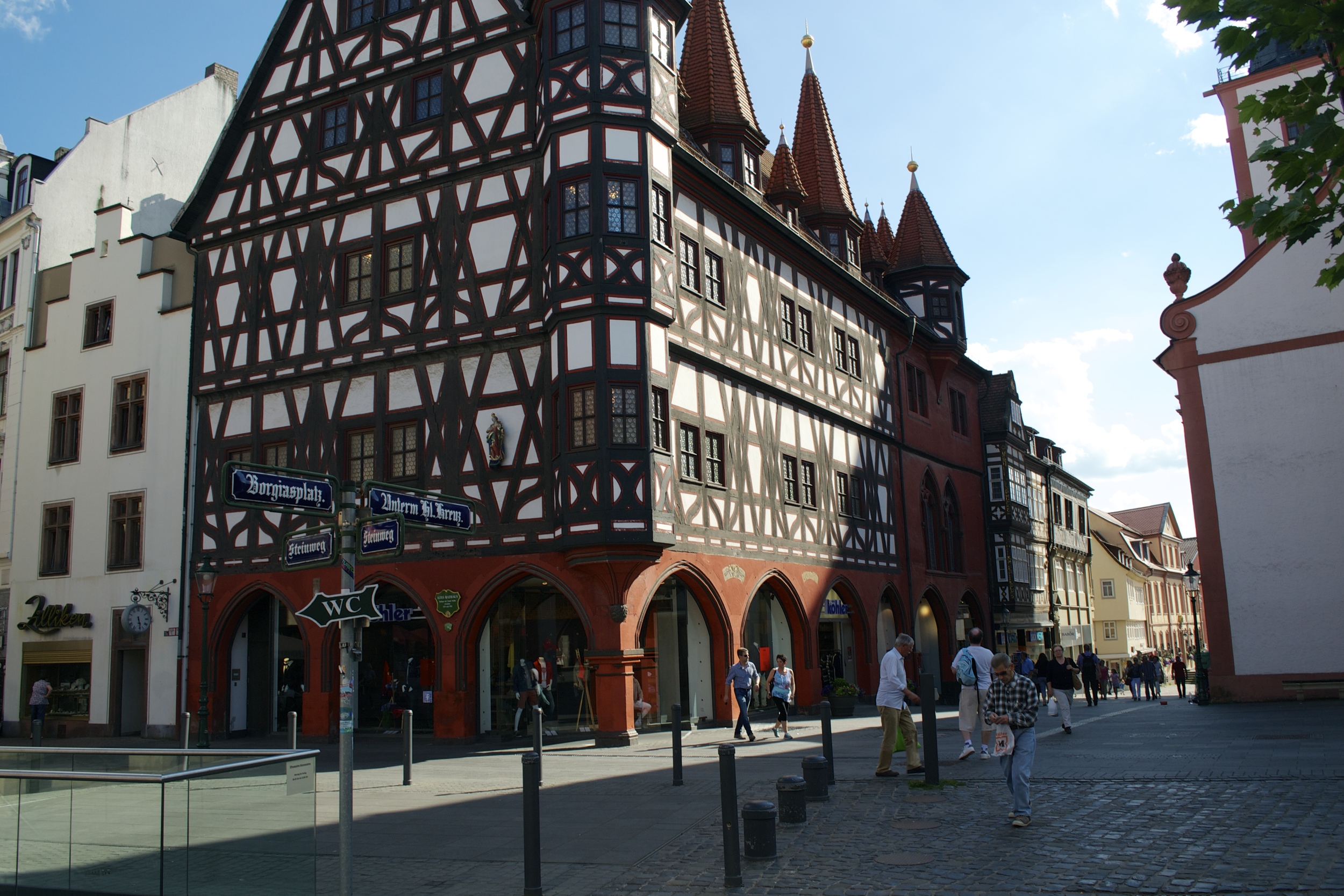
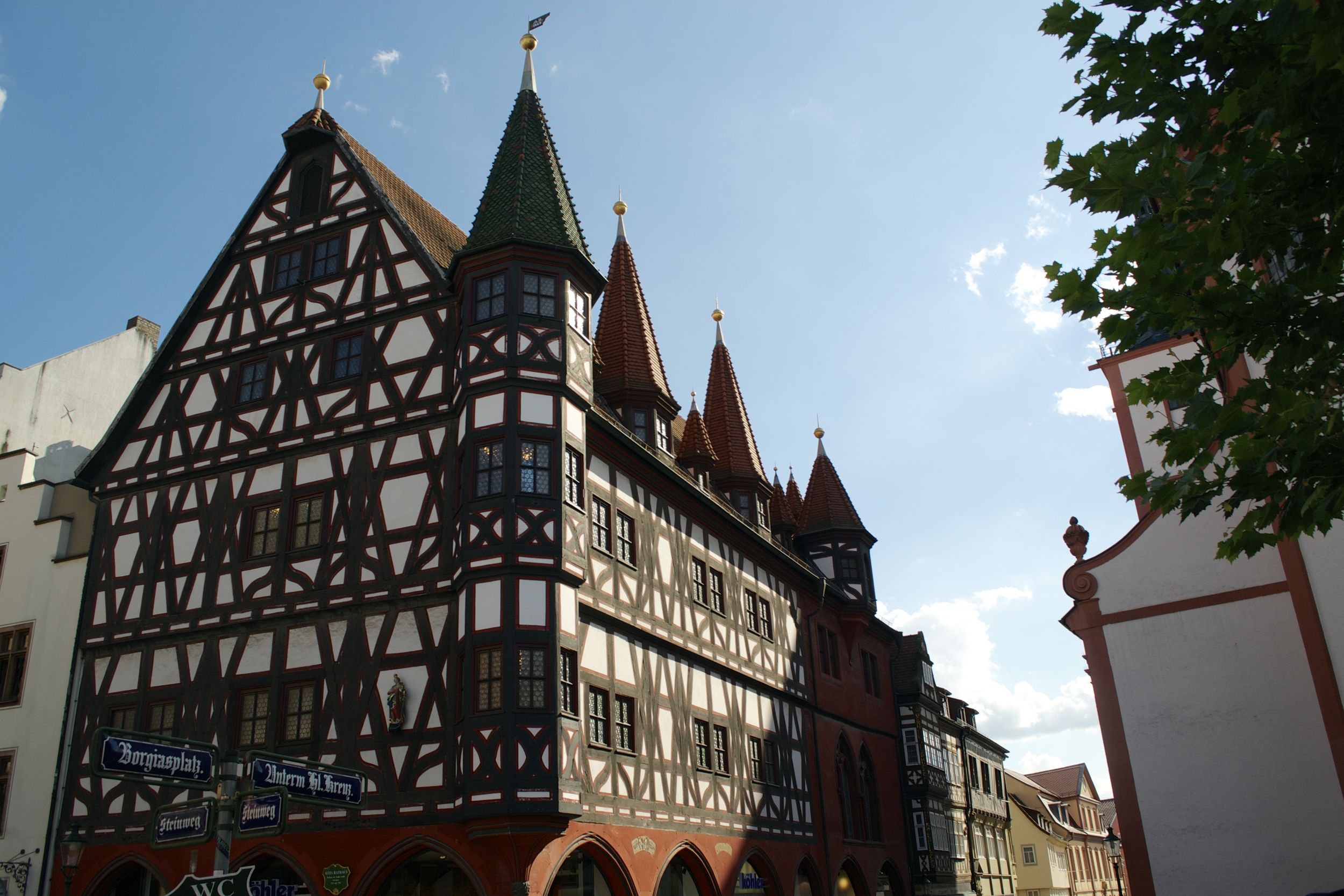
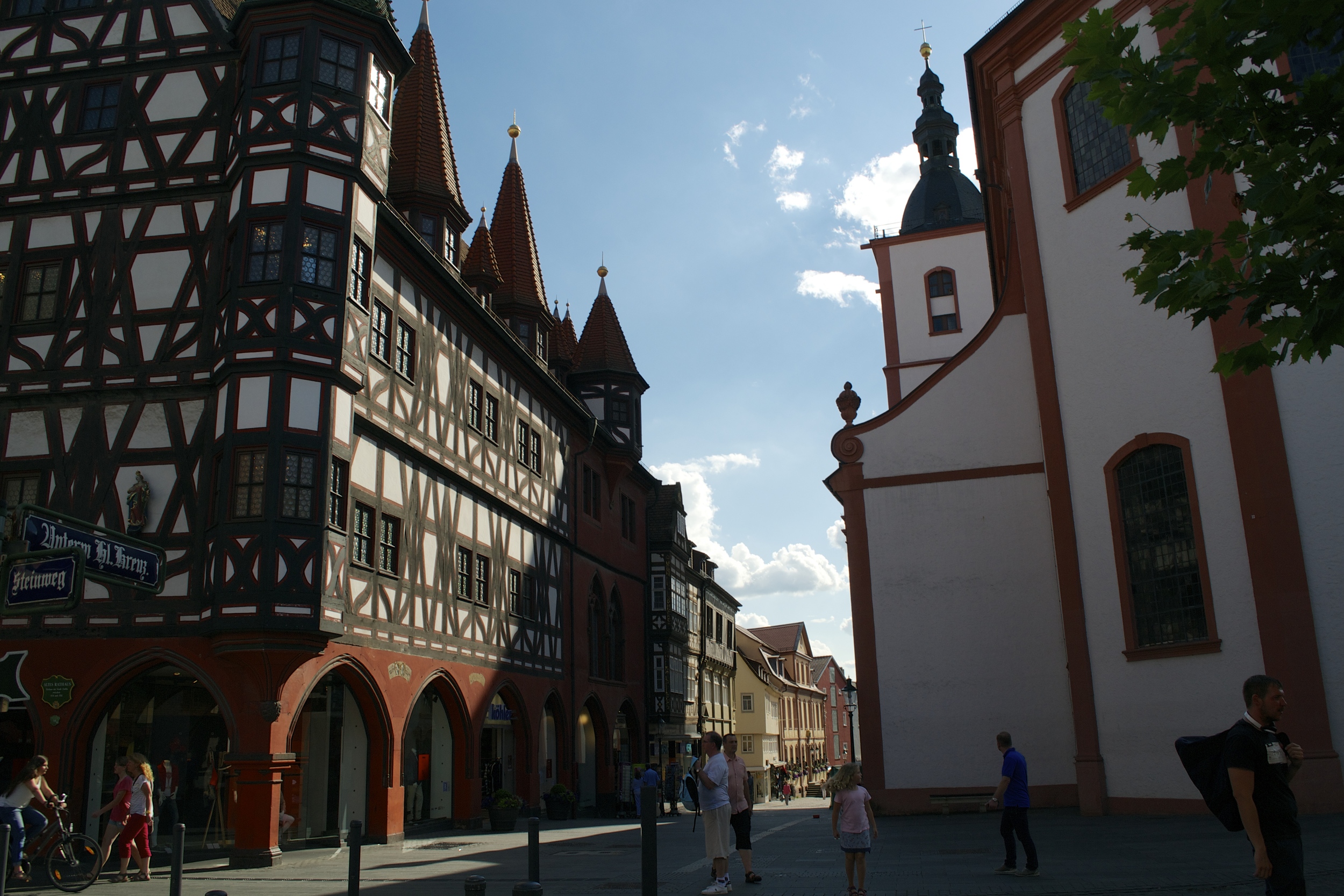
If we turn left, we are immediately met by a very typical-German-looking building. This is the Altes Rathaus (Old Town Hall), built in 1530. It suffered many alterations over the years, but the city restored it to its original appearance in the late 60s/early 70s. It's one of the few striking examples of Fachwerk (half-timbered) buildings in Fulda -- again, this city is much better known for its Baroque architecture. It was hard to capture it in just one picture, so click the picture to see additional perspectives. The red and white building to the right is the Stadtpfarrkirche, but we'll talk more about that in a second.
Walking straight between the Altes Rathaus and the Stadtpfarrkirche, we end up at a small square that is another example of something nice being ruined by something hideous. Let's ignore that exposed insulation on the right and look the other direction...
The building is still there, but look! You have some pretty Fachwerk to look at. And an obelisk! To get a better look at the Stadtpfarrkirche, off to the right, we need to walk into the square a bit and then turn around.
There you are! The Stadtpfarrkirche (basically, the City Parish Church) is a Catholic church built between 1771 and 1784. It's one of two main Baroque churches in Fulda, but it's fairly overshadowed by the other one (you'll see why in a bit). If you'd like to see what it looks like inside, click through the gallery to see some pictures I made a little while ago.
Beside the church, there is a small administrative building and an obelisk topped with a cross. The square itself is called "Unterm Heilig Kreuz" ("Under the Holy Cross"). The obelisk dates from 1669 but I haven't been able to ascertain if it has any significance. The building behind it is the Kanzlerpalais, and used to be the residence of Fulda's chancellor.
The street that continues on past the Stadtpfarrkirche is lined with dozens of shops, restaurants and cafes. On a sunny day like this one, the tables outside are usually full of people soaking up the good weather.
However, we're not going to head down that street quite yet. Instead, we're going to make walk past these brightly painted Fachwerk buildings...
And make a left down here. The Fachwerk building to the left houses La Romantica, a very popular Italian restaurant in town. I've eaten there several times and very much enjoyed it. Quality food at reasonable prices.
Walking past La Romantica, we come across one of my favorite little parts of Fulda, Pfandhausstraße. It's not a very long street, but I've always just really enjoyed the look of the buildings here. There are a couple restaurants tucked away in here -- usually the street is wide open for pedestrians, but in the nicer weather it seems they've decided to set out some tables and chairs so guests can enjoy the good weather as well as their food.
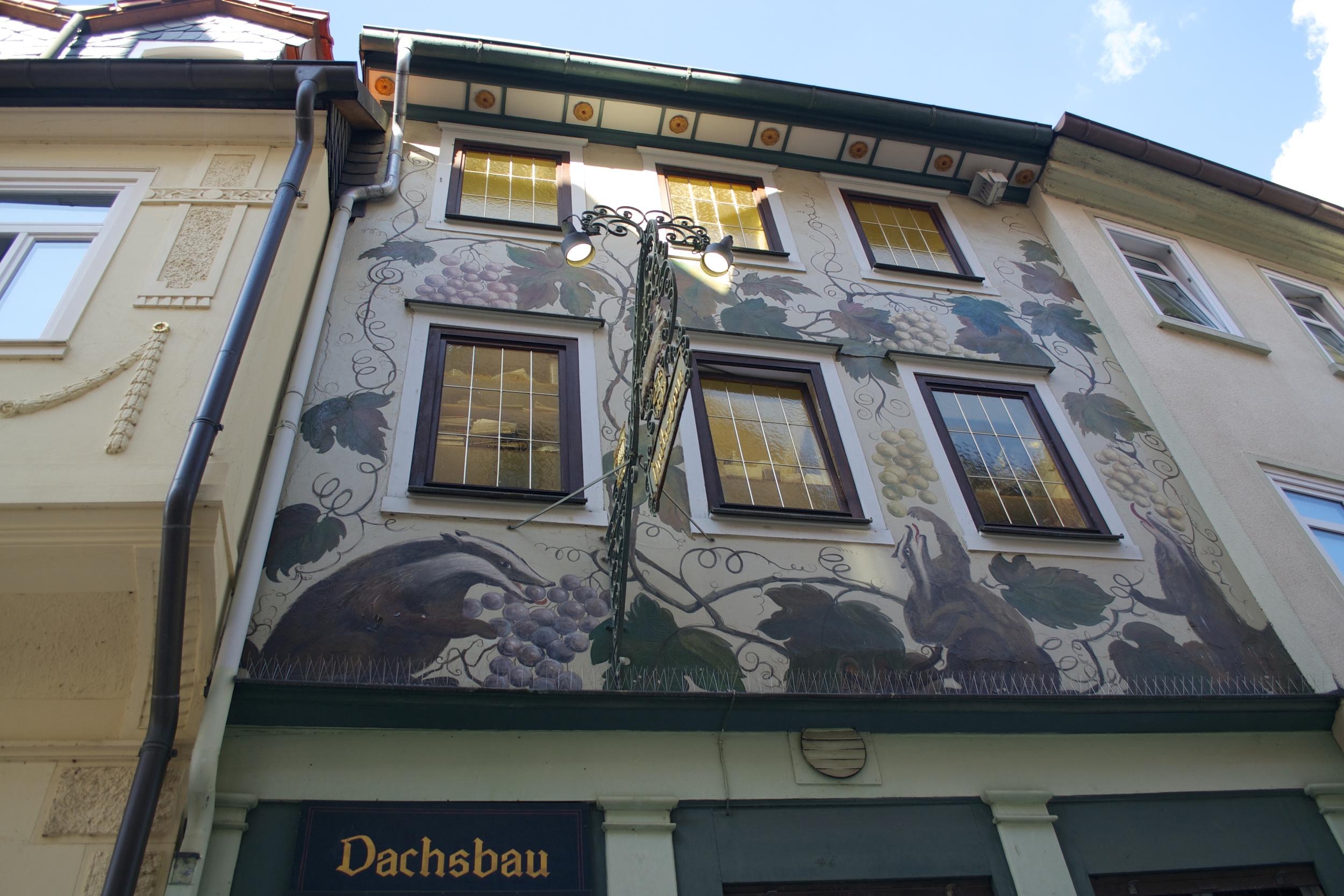
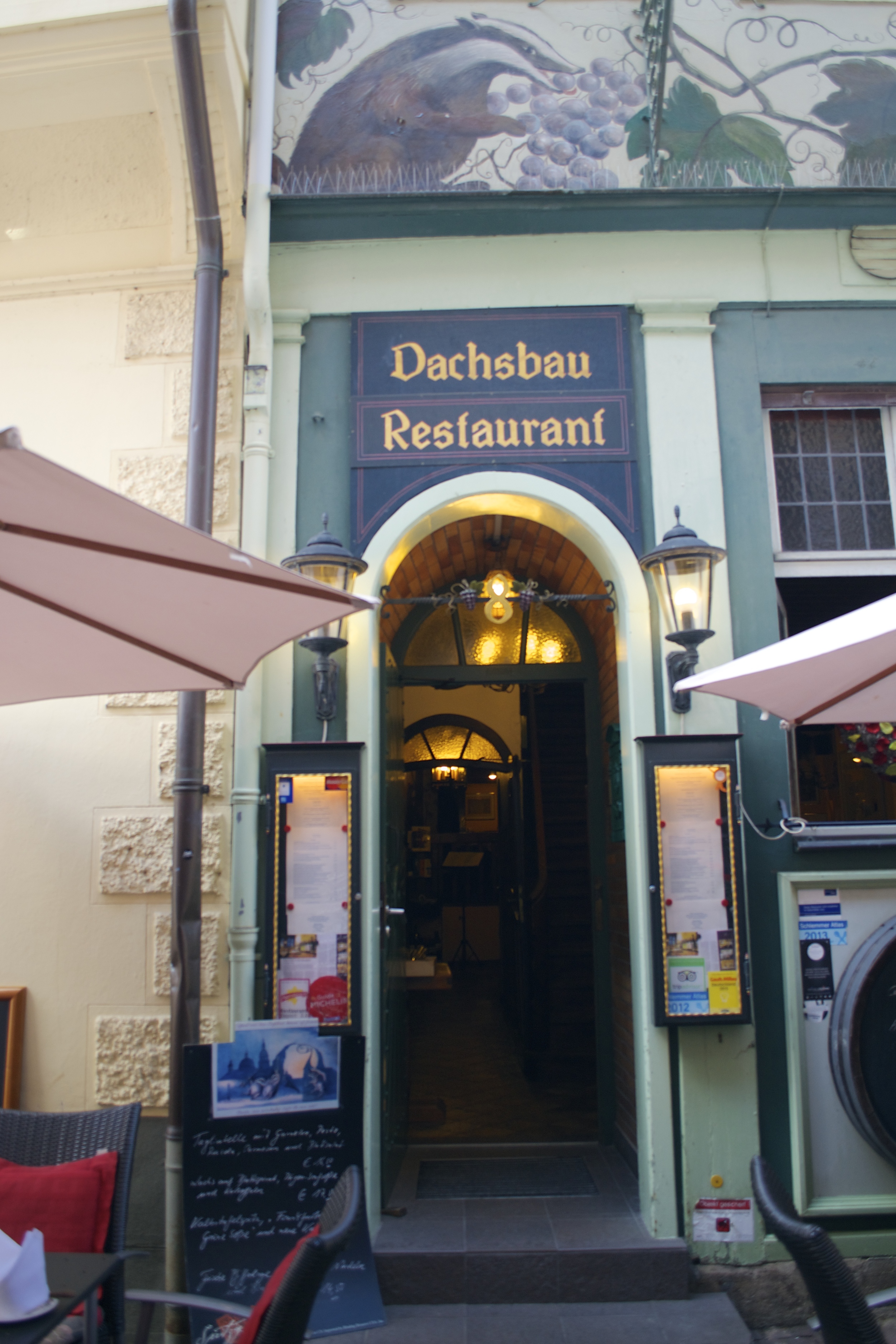
This is my favorite building on this street, Dachsbau ("Dachs" in German means badger). As far as I have been able to tell, this is Fulda's fanciest restaurants. I've never eaten there -- I tried to once with my parents, but we weren't able to get in without a reservation, even upon arriving right when it opened for dinner. I love the images of playful badgers scarfing down grapes.
One more view of this cute little street...
And as we exit the street and make a left, we see the tiny St. Severi's, Fulda's only real remnant of Gothic times. The church was built in 1438, but overall it's really not much to see. The interior is quite boring and there are definitely more exciting Gothic churches to be found in Germany. So, we'll move on.
Heading down the street and making a right, we pass the Hotel zum Ritter, also one of Fulda's nicer restaurants, though I haven't eaten there either. You can also see a large dome peeking out of the trees ahead -- we're nearing Fulda's flagship cathedral.
Continuing down the street, we see an ivy-covered tower emerge. This is the Hexenturm ("Witches' Tower"). An exciting name, though in reality the tower itself doesn't have much to do with witches. It's just an old remnant of the city walls, dating back to the 12th century. There was a witch hunt in Fulda early on that resulted in the execution of some 270 "witches", but they were not imprisoned in the tower.
Heading straight, we start to see the cathedral in Fulda emerge from the trees. Rather than cross the street here, we'll first make a right...
And walk up this tree-lined street...
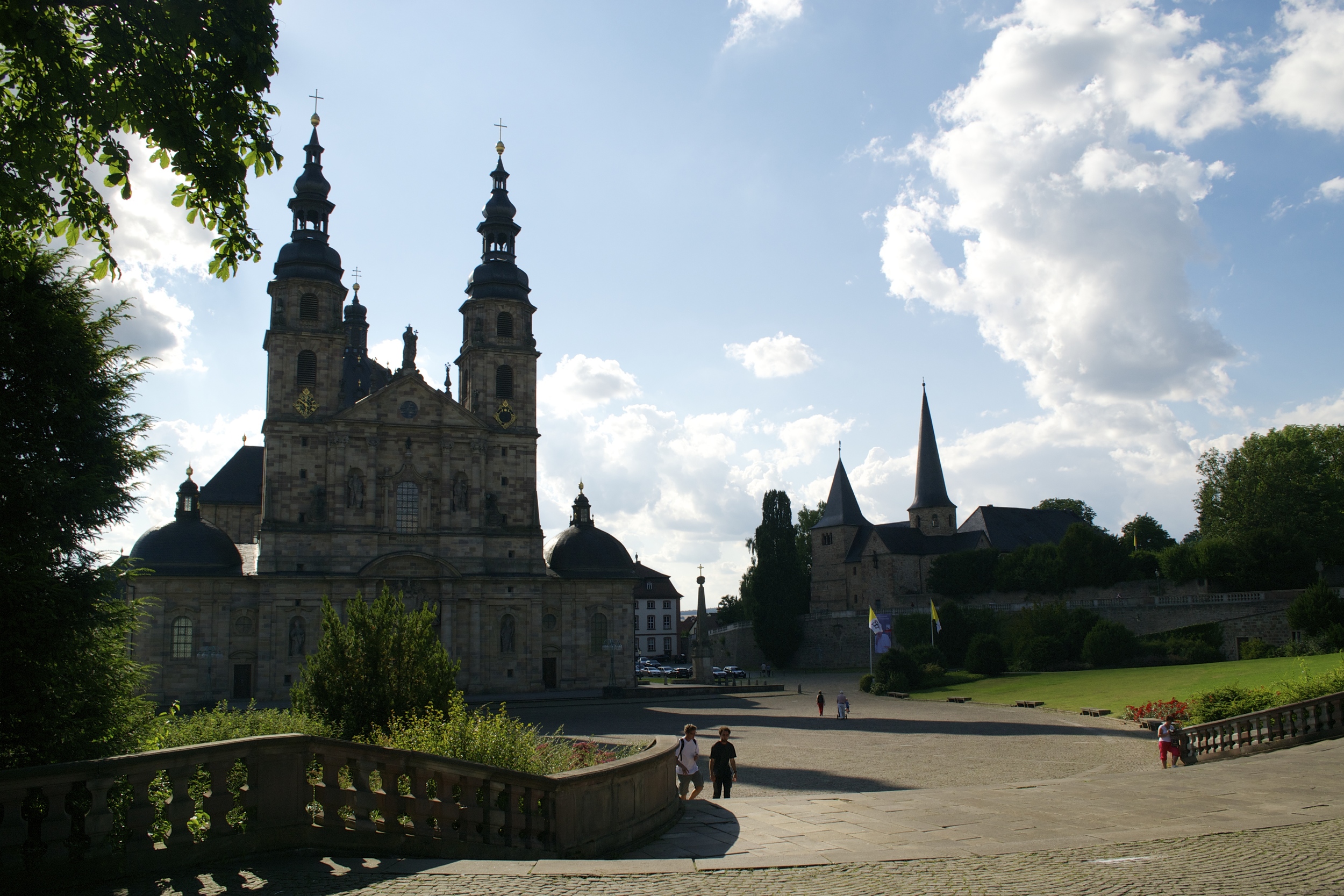
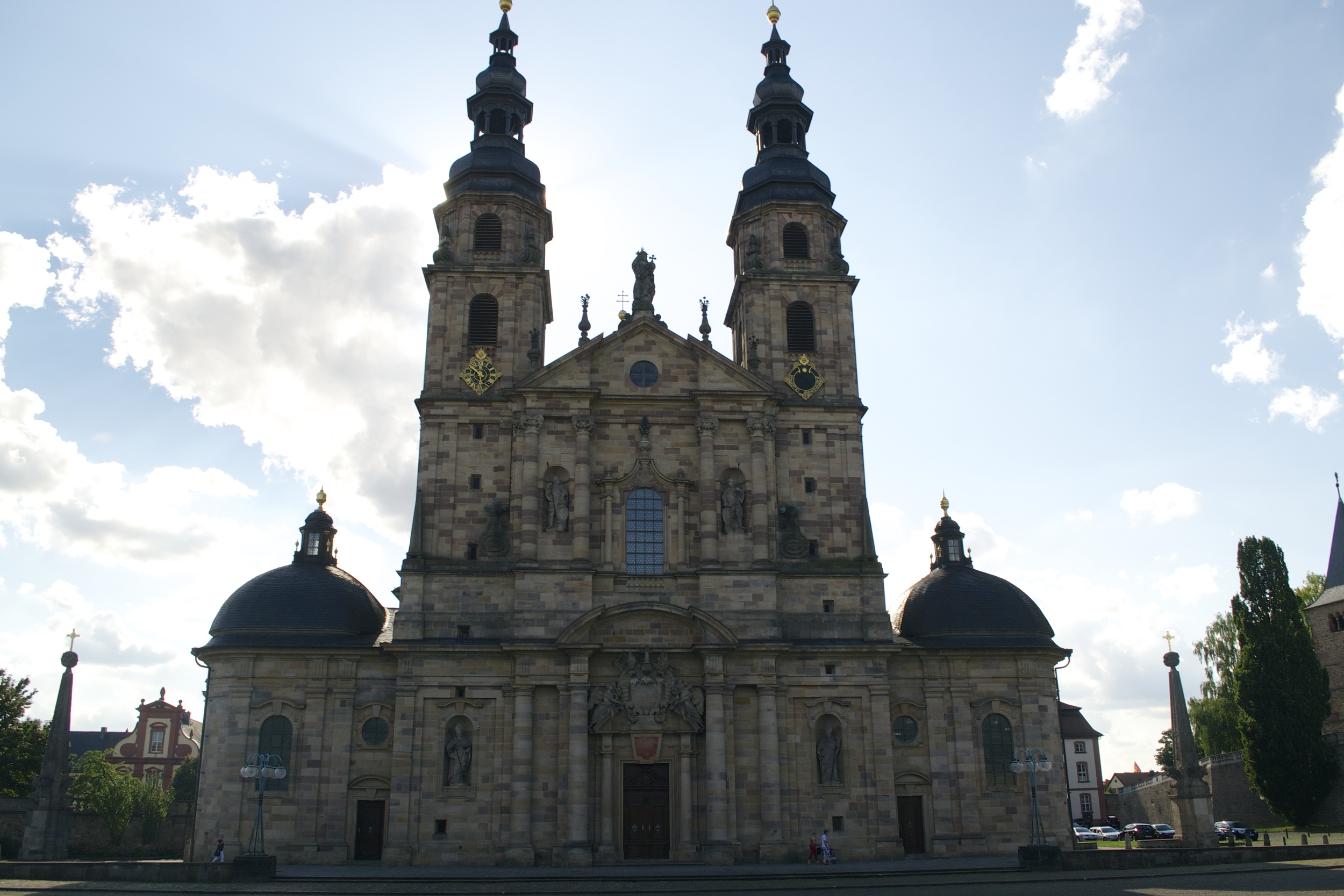
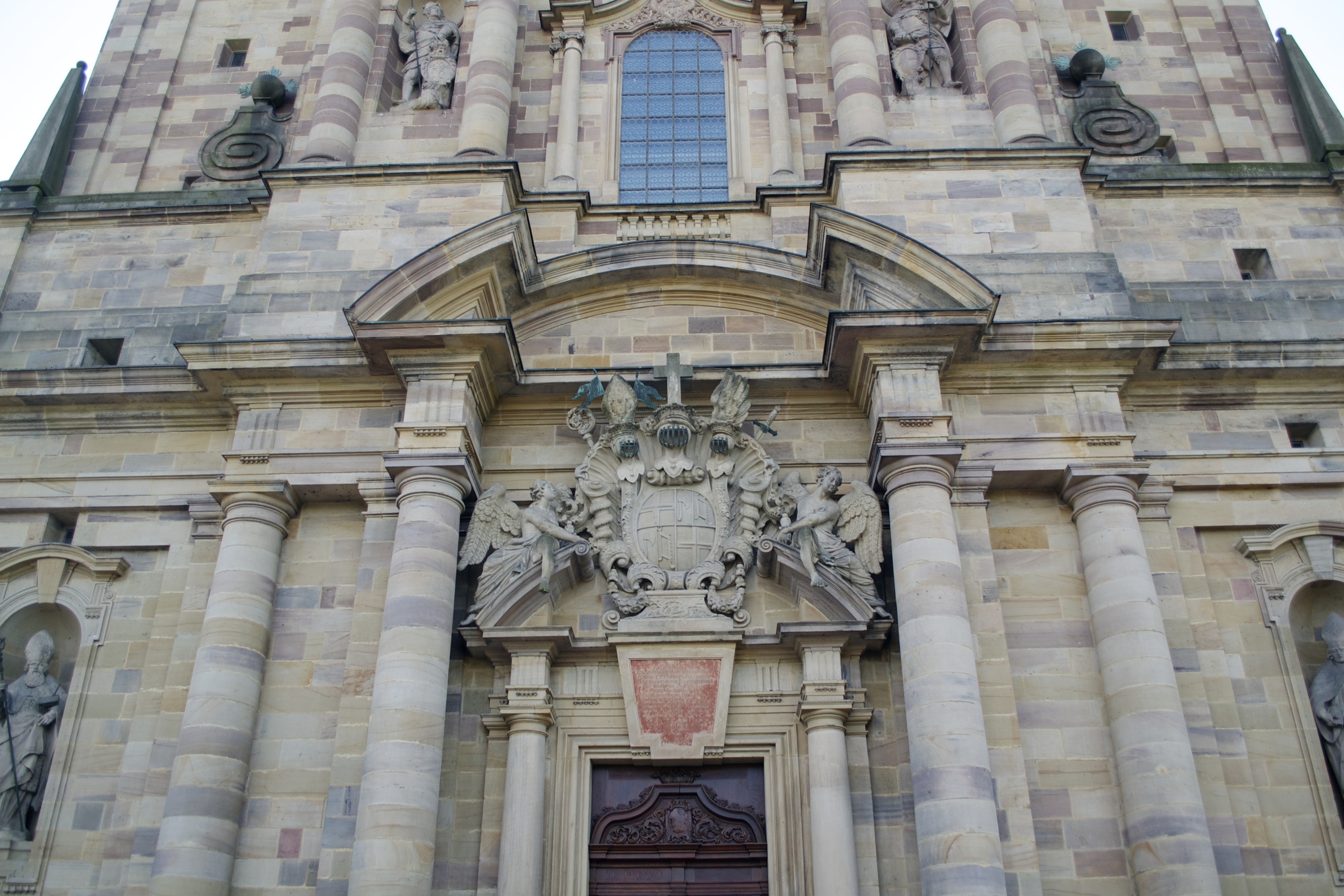
So that we can have a better view of the whole church! Unfortunately your tour guide did not time her photography trip very well, as the sun was not very favorable to photographing the Dom at this time of time, so I included one picture from a trip on a previous day with better lighting.
But this is the Fuldaer Dom, probably the most famous sight in Fulda. It's one of the finest examples of Baroque churches in Germany. It's also where St. Boniface is buried (again, he is the person responsible for bringing Christianity to Germany, so he's a pretty big deal both historically and religiously speaking). That it is also the seat of a bishop gives it local significance as well.
The Dom was built on the site of a much older church, though portions of that old church (such as its towers) were incorporated into the new building. Construction on the Dom began in 1704 and was completed in 1712. The coat of arms above the central doors is that of the church's builder, Prince Abbot Adalbert von Schleiffras.
The inside of the church is crisp and bright, but still carrying all the signatures of Baroque style. Here are some pictures from previous visits inside the church.
Just off to the right of the Dom is a much smaller, simpler looking church, but looks can be deceiving. This is the Michaelskirche, which was completed in 822. Yes, that's right -- this church is more than 1,000 years old. Granted, the building has undergone many changes and renovations over the years (the crypt is the only part of the church that remains from its original form), but regardless it's a fascinating piece of history.
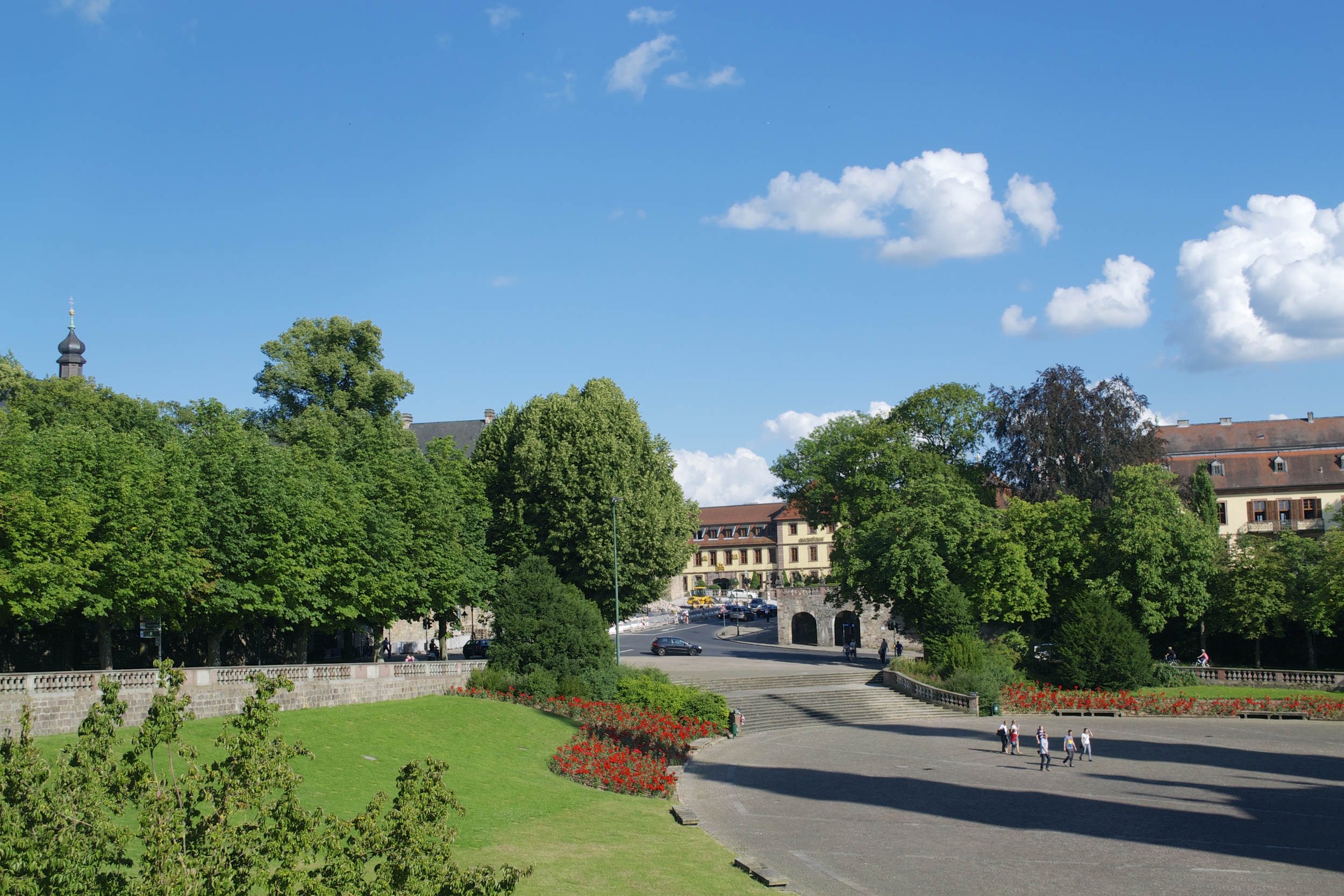
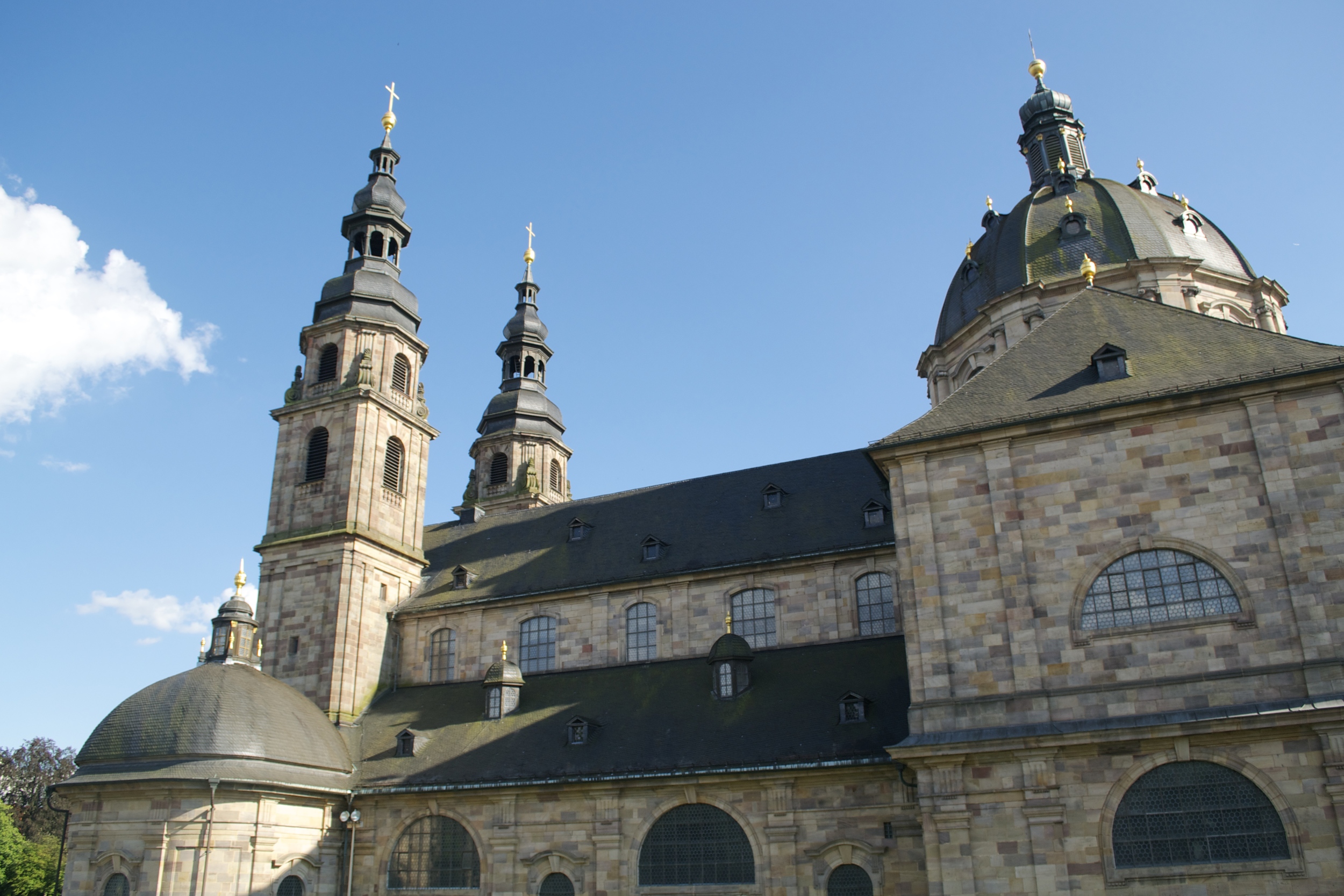
Walking up the pathway that leads to the Michaelskirche, we get a view out over the Domplatz. Ordinarily the space is kept open, but occasionally special events are held here -- for example, just a couple weeks ago, Elton John played an outdoor concert in front of the Dom. This also gives us a chance to see the Dom from the side as an alternate perspective.
Now let's walk back toward the street. On the left, we see the Paulstor (Paul's Gate). It was designed by the same person who designed the Dom, and when it was built in 1711 it was originally placed between the city palace and the main guard house. It was moved to its current place a few decades later. We're going to cross the street in front of the Paulstor and duck through a gate that leads...
Here! Here being the Orangerie. Now we're really getting a chance to appreciate Fulda's Baroque beauty. The Orangerie, built in 1725, used to protect the orange trees and other plants belonging to Fulda's nobility during winters. Today, it's part of an adjoining hotel and is sometimes used to host concerts and other special events.
And if we turn around opposite the Orangerie, we see this lovely sight: Fulda's Schlosspark. This is my absolute favorite place in Fulda. The park is not particularly large, but it makes up for that in its elegant beauty, which is carefully maintained by the city. The building on the opposite side is the Stadtschloss (City Palace), which we'll get to shortly.
In front of the Orangerie is the Flora Vase statue, dating from 1728. The statue is apparently one of Germany's finest examples of baroque sculpture. So there you go.
Heading down the stairs and crossing the park, we pass dozens of people out enjoying the sunny weather. On nice days the Schlosspark is always full of locals sunning themselves, sharing a beer or playing soccer.
As we walk up the stairs on the opposite side of the park and turn around, we are rewarded with this view, which is sort of the "token" Fulda picture. This is an image used frequently in marketing materials for Fulda, and it's clear why -- this single image deftly captures the town's baroque elegance. It was one of the first pictures I found when googling Fulda after I found out that's where I'd be living.
Looking back toward the Stadtschloss, we get our first proper view of the building. Unfortunately, for reasons you'll shortly learn, this is probably the best view of the Schloss that exists right now. The palace as it exists today was built between 1707 and 1721, although a residence existed at the same location as early as 1312. The palace was built to house Fulda's Prince Abbots, the local rulers.
Heading through the gardens toward the street, our tour guide runs into an unexpected roadblock when the staircase she planned on taking down turned out to be closed for construction. Whoops. Here at least though you have a chance to see what used to be the Hauptwache (main guard house). Today it houses a Cuban-themed cocktail bar, because such is the way of history.
After finding an alternate path back to the street, we walk past the Hauptwache toward the statue of St. Boniface -- have I made it clear to you yet that this city really cares about Boniface? They really like Boniface.
Whelp, ok, let's keep moving, nothing to see here--
except this monstrosity. This is the utterly charming front to the Stadtschloss. This has been a huge source of frustration for me, because the front of the palace has effectively been under some sort of construction since I arrived almost a year ago. It would have been nice to, you know, actually see the palace in its proper state at least once before I leave, but it's cool, keep tearing up sidewalks and ripping out lawn.
We'll keep walking past the Stadtschloss. Now you might recognize where we are -- we're heading back toward the Stadtpfarrkirche!
However, rather than head back up past the Rathaus, we're going to take one last detour down one of the shopping streets in the Altstadt, just to give you an idea of what the rest of the inner city looks like.
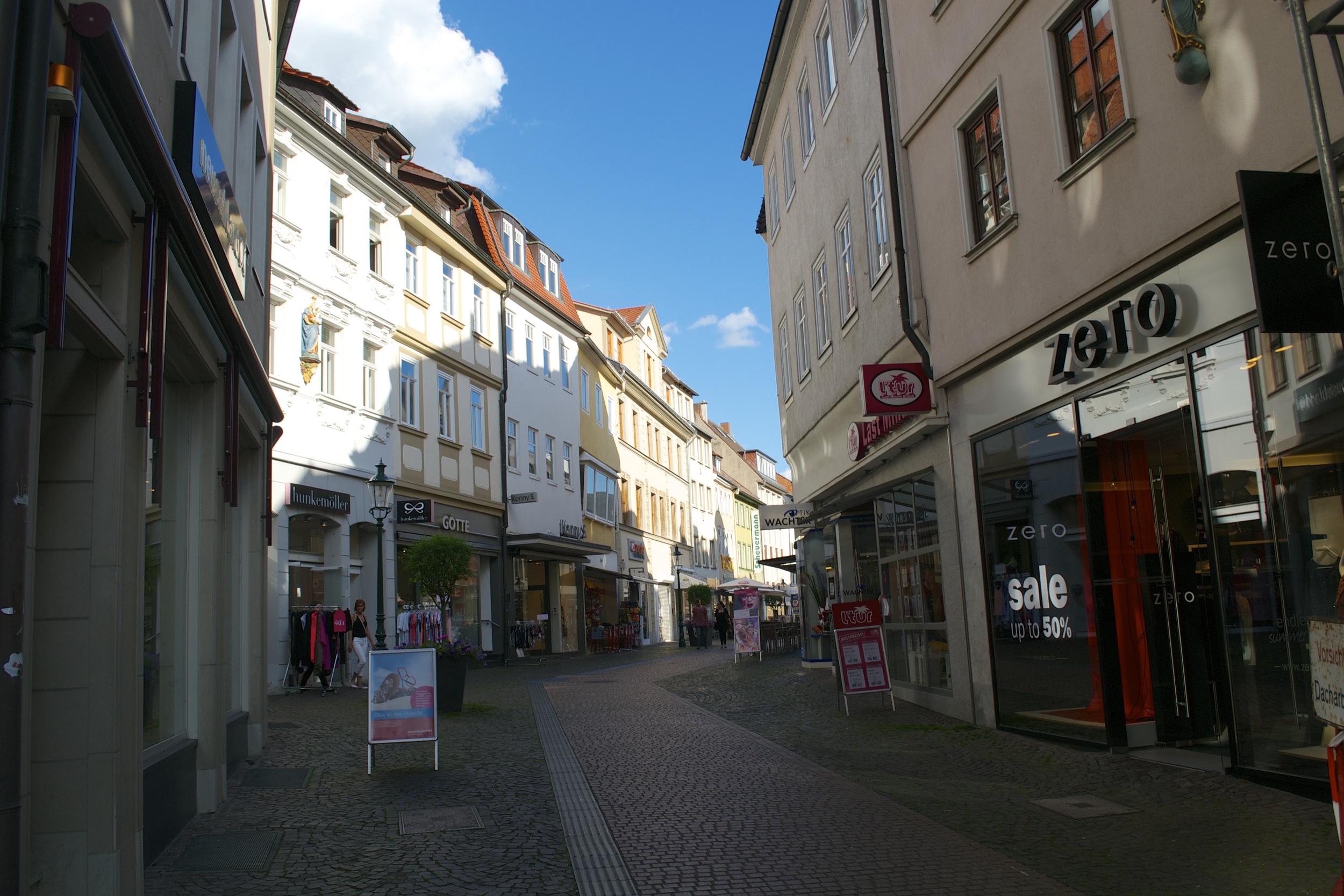
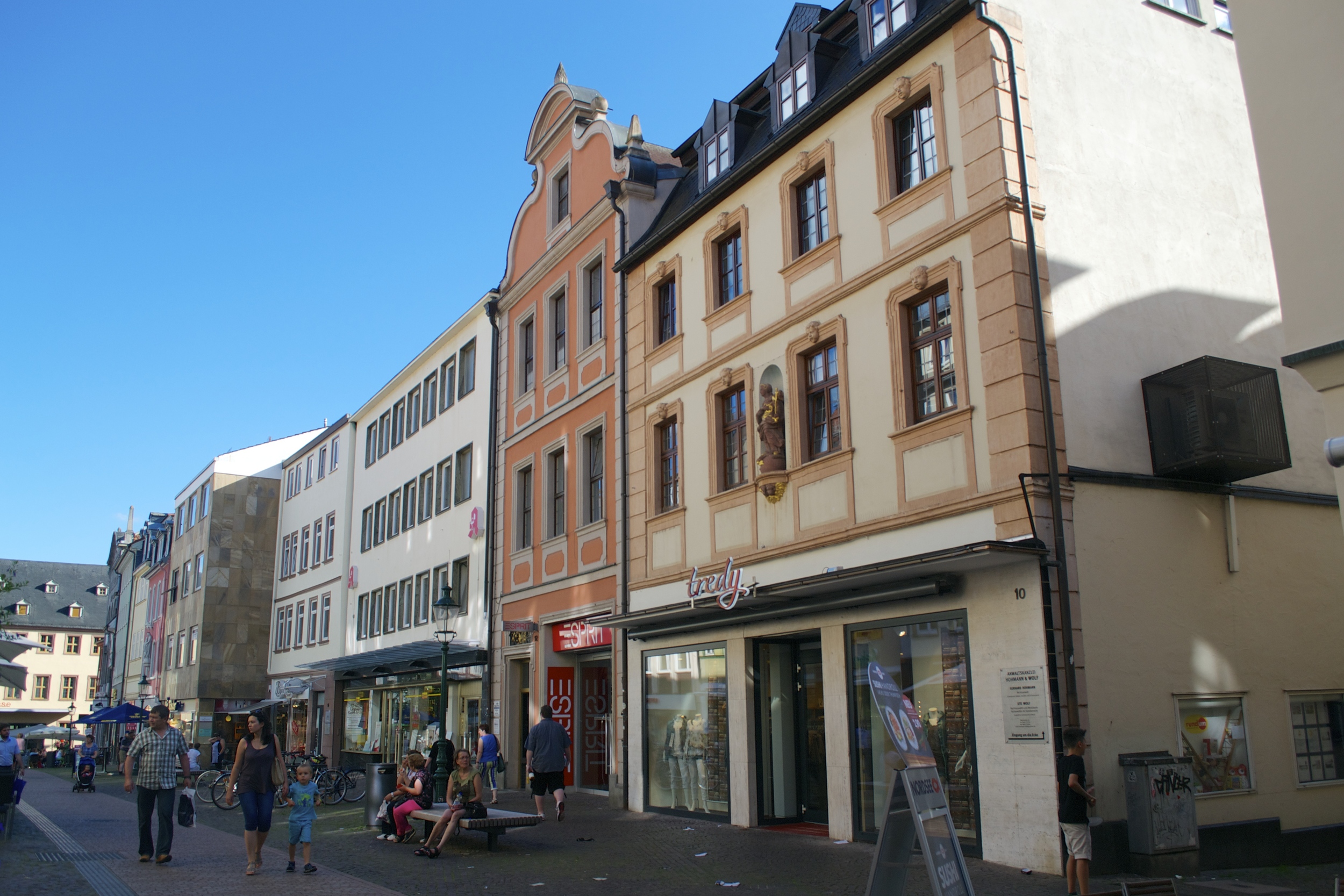
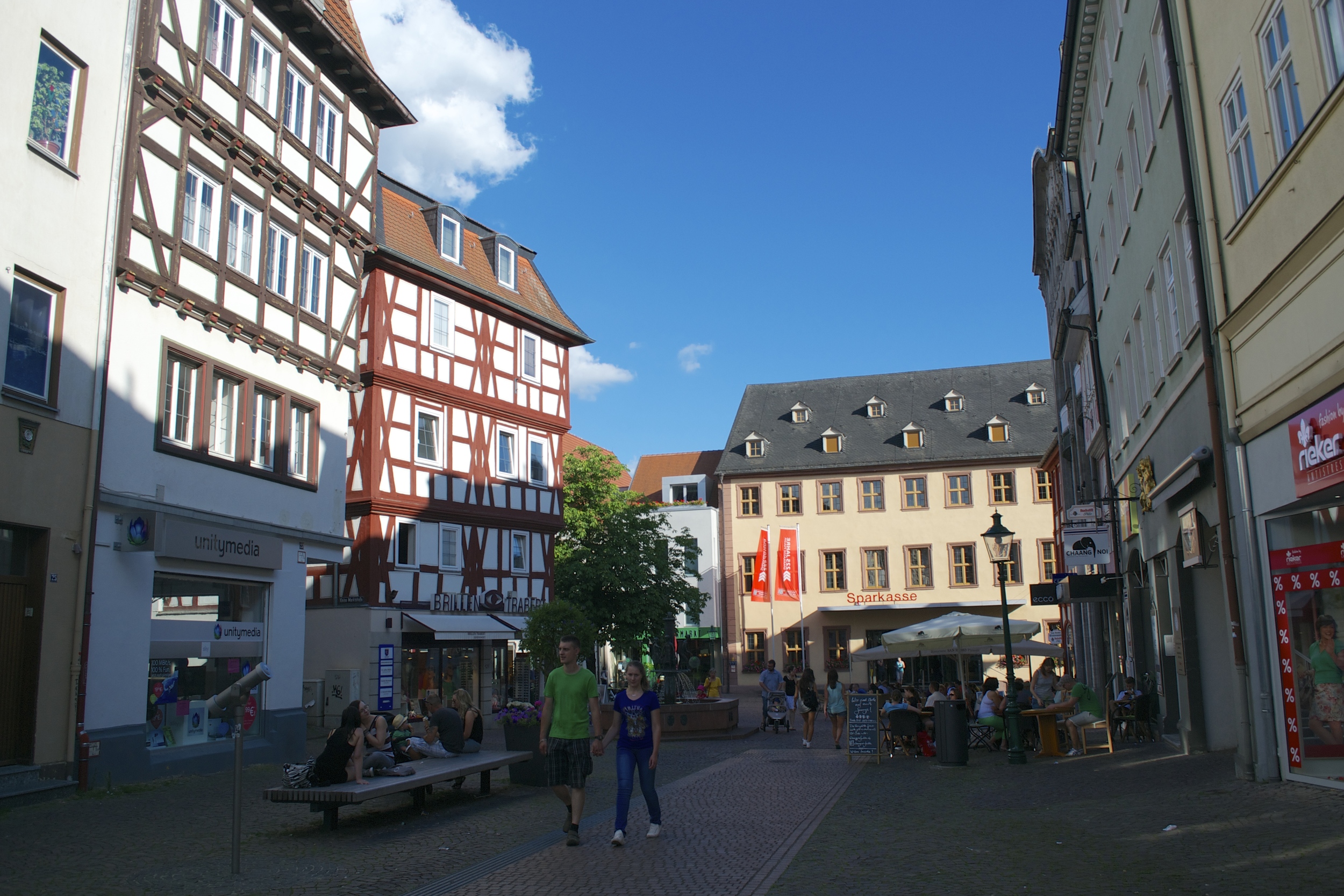
Not too shabby, right?
At the end of the street is one of my favorite views of Fulda. I just love the colorful buildings that lead in toward the Stadtpfarrkirche, one of the town's more recognizable sights. I feel like this really captures the essence of Fulda -- lovel and laid-back, with a very understated charm to it.
Now we'll head up the street and make a left -- that's the backside of the Vonderau Museum in front of us.
We'll make a right at the museum and slip through this super boring alley (it's a testament to just how sleepy Fulda can be that this area is almost utterly devoid of graffiti or posters of any kind.
Making a left at the end of the alley, we can see we're just about back where we started, because the Uniplatz is right in front of us. Incidentally, the building off to the right is the former university that gives the Uniplatz its name.
And here we are, right back where it all began.
Thanks for coming on this journey with me! Hopefully you enjoyed getting the chance to learn a little more about where I've been living these past 11 months. Although Fulda could be a little too quiet for me at times, overall it's a lovely little town that I've really enjoyed exploring. One benefit of being in a smaller town is that I've been able to really explore this town from top to bottom and gain a familiarity with it that would never have been possible had I been placed in a proper city. And for what it's worth, there is (in my opinion) still more to see in Fulda than what is covered here. So, should you decide to someday make a journey to Fulda, fear not -- I haven't spoiled everything for you.
The next time you find yourself in Frankfurt, consider a day trip to Fulda -- I think you'll find it worth your while.



